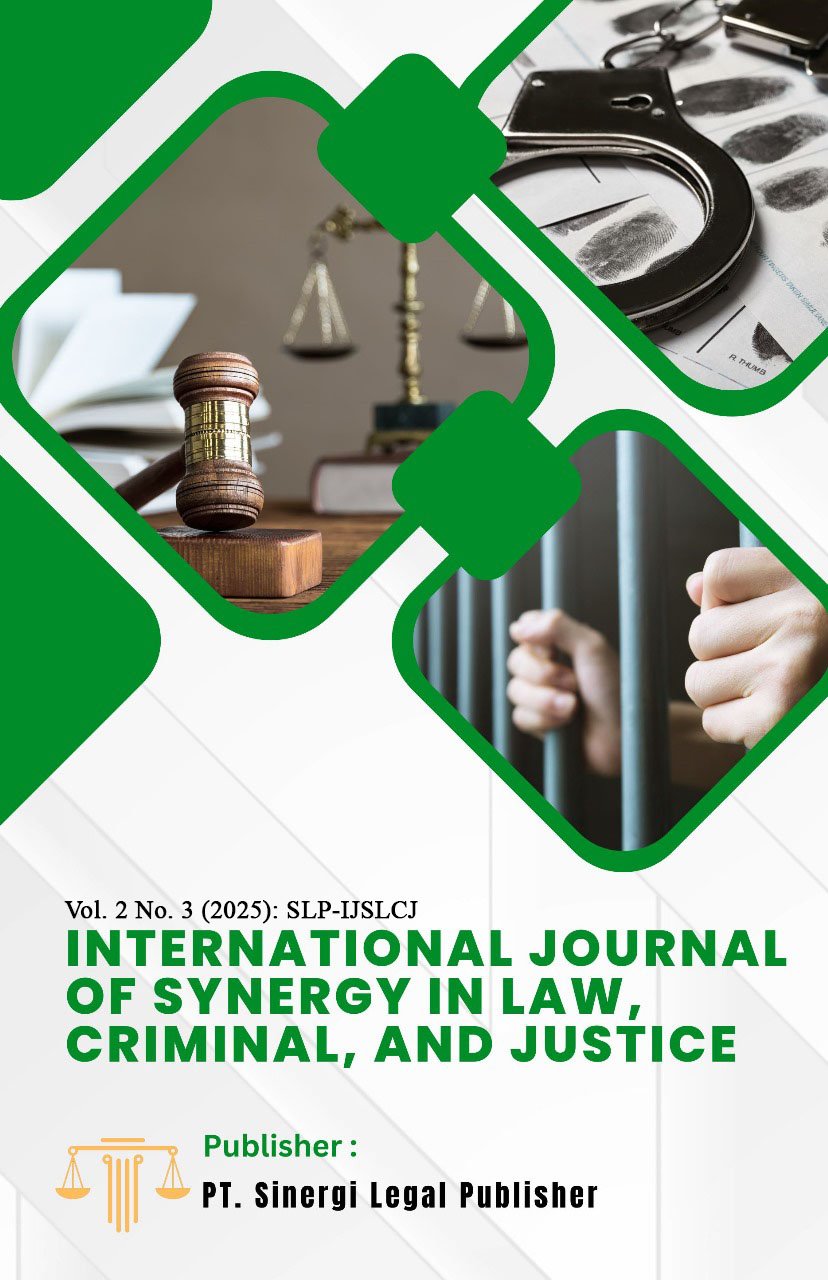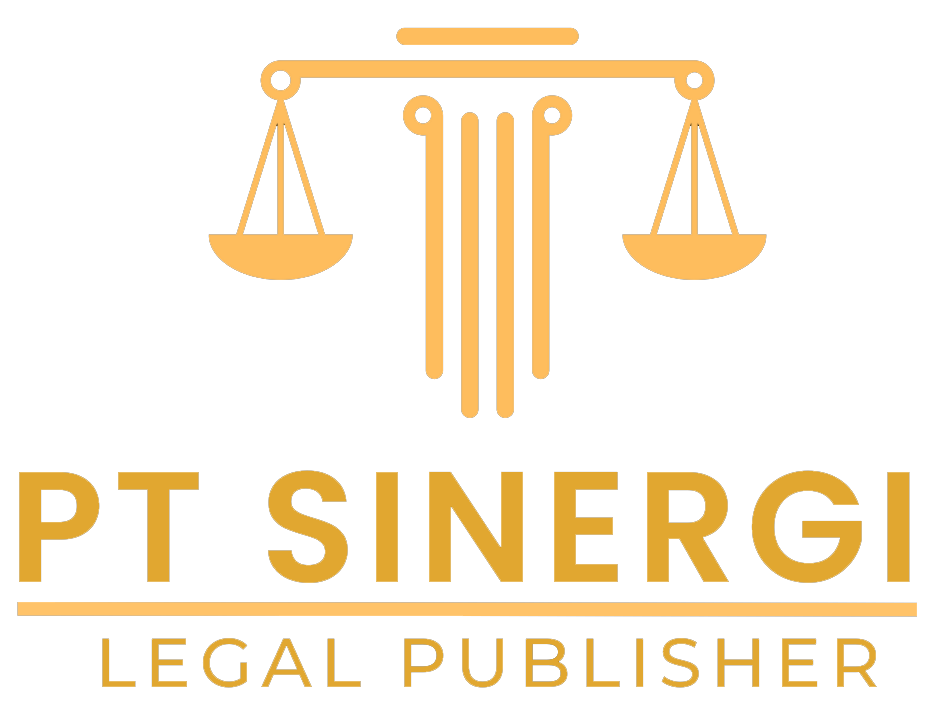LEGAL ANALYSIS OF THE APPLICATION OF CRIMINAL PENALTIES FOR PERPETRATORS OF NARCOTICS CRIMES
DOI:
https://doi.org/10.70321/ijslcj.v2i3.134Keywords:
Narcotics, Law Enforcement, RehabilitationAbstract
This study discusses the legal status and application of criminal penalties for perpetrators of narcotics crimes from the perspective of Law Number 35 of 2009 concerning Narcotics, with a focus on implementation in the Kabanjahe Detention Center. Narcotics are basically legally recognized only for health purposes and the development of science, but in social practice they are often misused, giving rise to multidimensional problems. The law has formulated criminal provisions in Chapter XV Articles 111 to 148, which divide narcotics crimes into four main categories: possession, production and distribution, trade or intermediary, and carrying and transporting. From each of these categories, criminal sanctions are determined with different levels of severity, including provisions for rehabilitation for addicts and victims of abuse.
The study results indicate that there is tension between the law on the books and the law in action. Normatively, Article 112 paragraph (1) stipulates a minimum sentence of four years for possession of class I narcotics without permission, but in practice, there are court decisions that impose lighter sentences, such as Supreme Court Decision Number 3790 K/Pid.Sus/2020. This indicates the flexibility of judges in considering the status of abusers, whether as perpetrators of criminal acts or as victims who deserve rehabilitation.
The implementation of criminal law at the Kabanjahe Detention Center includes admitting inmates, executing prison sentences, and providing guidance and rehabilitation programs. However, limited facilities and human resources prevent rehabilitation from being optimal. This study emphasizes the need for a balance between repressive law enforcement and humane rehabilitation efforts to effectively achieve the goals of protecting the community and rescuing victims of drug abuse.
Downloads
References
AISYA, AFRA RAHADATUL. 2023. “INVESTIGATION PROCESS OF NARCOTICS CRIMINAL PERPETRATORS IN JAMBI CITY RESORT POLICE.” Batanghari University, Jambi.
Arifin, Samsul. 2021. “Criminal Responsibility for Children as Narcotics Couriers.” Justitia Jurnal Hukum 5 (1).
Fazizullah, Fazizullah, Marlina Marlina, and Muhammad Arif Sahlepi. 2022. “Legal Study of Narcotics Crimes Based on Law Number 35 of 2009 Concerning Narcotics in the Banda Aceh Region (Study of Decision Number: 248/Pid. Sus/2015/PN Bna).” Al-Hikmah Law Journal: Media for Communication and Information on Law and Society 3 (2): 304–25.
Fithri, Beby Suryani. 2020. “A Preventive Approach to Protect Victims of Narcotics Crimes.”
Judge, Rohman. 2023. “Law Enforcement of Criminal Acts of Narcotics Abuse by Children in the Perspective of Law Number 35 of 2009.” Journal of Legal Preferences 4 (2): 279–91.
Iskandar, Anang. 2019. “Drug Abuse, Imprisonment or Rehabilitation.” Criminal Law and Legal Development 2 (1).
Iskandar, Anang, and S IK. 2019. Narcotics Law Enforcement (Rehabilitative for Abusers and Addicts, Repressive for Dealers). Elex Media Komputindo.
Lawalata, Jesylia Hillary, Juanrico Alfaromona Sumarezs Titahelu, and Julianus Edwin Latupeirissa. 2022. “Restorative Justice Approach in Resolving Narcotics Crime Cases at the Investigation Stage.” TATOHI: Journal of Legal Studies 2 (1): 91–112.
MEDAN, DRUGS IN THE CITY. and “THE ROLE OF THE NATIONAL NARCOTICS AGENCY OF NORTH SUMATRA PROVINCE IN HANDLING ABUSE AND DISTRIBUTION.”
Munandar, M. 2019. “Therapeutic Communication of the National Narcotics Agency Deli Serdang Rehabilitation Center in Curing Drug Addicts.” State Islamic University of North Sumatra Medan.
Nasution, Asnan, Gunaldi Terarianto, and Gomgom TP Siregar. 2022. “ANALYSIS OF LAW NUMBER 8 OF 2010 CONCERNING THE ERADICATION OF MONEY LAUNDERING CRIMINAL ACTS LINKED TO NARCOTICS CRIMES.” RECTUM JOURNAL: Legal Review of Criminal Act Handling 4 (1): 393–405.
Rahmah, Andi, and Amiruddin Pabbu. 2022. “Legal Analysis of Narcotics Possession Crimes (Case Study of Makassar City).” Alauddin Law Development Journal 4 (2): 311–20.
Rinaldo, Rinaldo, Triono Eddy, and Alpi Sahari. 2022. “Implementation of Rehabilitation for Narcotics Abusers by Police Investigators (Study at the North Sumatra Regional Police Narcotics Directorate).” Legalitas: Journal of Law 14 (1): 43–53.
Sitompul, Ariman. 2021. “Accountability for Money Laundering Crimes with Narcotics Origin in North Sumatra from an Islamic Law Perspective.” State Islamic University of North Sumatra.
Subekti, Agung, Nys Arfa, and Aga Anum Prayudi. 2022. “Sentencing of Narcotics Trafficking Criminals at the Kuala Tungkal District Court.” PAMPAS: Journal of Criminal Law 3 (3): 358–69.
Suisno, Suisno. 2017. “Legal Review of Intermediaries in Narcotics Crimes According to Law Number 35 of 2009.” Independent Journal 5 (2): 69–80.
Tarigan, Tia Miranda, Tharra Dwi Firanda, Elvira Khairunisa, Zahra Syariani Siregar, Mhd Wahyu Azis Ermanto, and Indra Utama Tanjung. 2024. “Development of International Maritime Law: Analysis of the South China Sea Case.” MULTIPLE: Journal of Global and Multidisciplinary 2 (5): 1722–31.
Wijaya, Ananta, and Ahmad Ruslie. 2024. “Obstacles and Problems in the Rehabilitation of Narcotics Crime Offenders According to Law Number 35 of 2009 Concerning Narcotics.” Journal Evidence Of Law 3 (3): 302–13.
Yanti, Rahma. 2020. “Criminal Decisions Against Narcotics Abusers Decision No. 2854/Pid. Sus/2018/Pn Mdn (Review Based on Positive Criminal Law and Islamic Criminal Law).” Al-Qanun: Journal of Social Studies and Islamic Law 1 (3): 324–46.
Downloads
Published
How to Cite
Issue
Section
License
Copyright (c) 2025 Jon Heder Depari , Herny Aspan , T. Riza Zarzani

This work is licensed under a Creative Commons Attribution-ShareAlike 4.0 International License.














